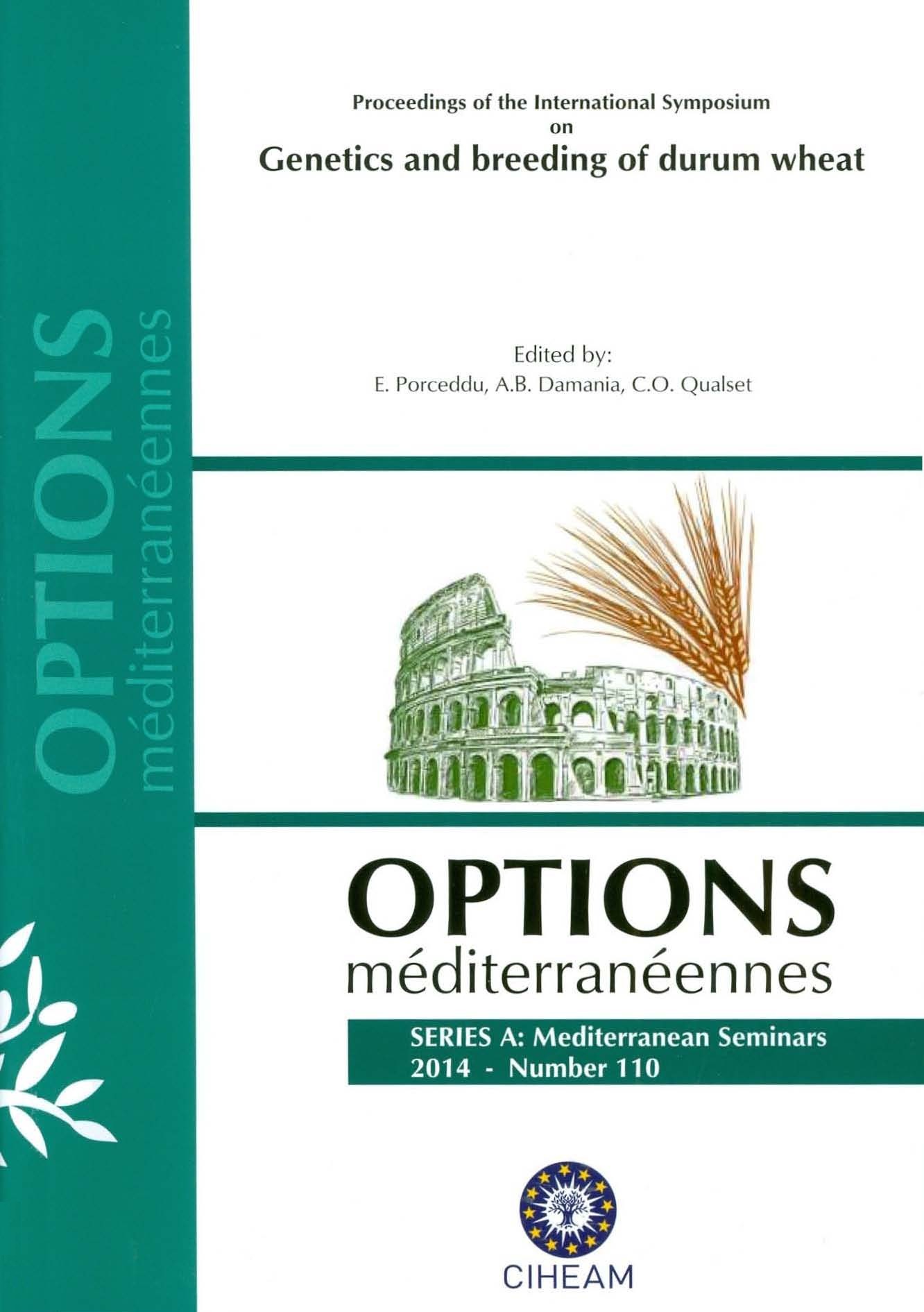| Article précédent | p. 505-510 | Article suivant |
Quality in durum wheat: comparison between landraces and high yielding varieties
Eight durum wheat genotypes: four landraces and four high-yielding varieties were studied in two regions (sub-humid and semi-arid) of Tunisia, using four fertilizer treatments and during two cropping seasons. Three quality parameters were evaluated: thousand-kernel weight (TKW), yellow berry (YB) and protein content (P). Significant Genotype x Environment x Fertilizers interaction (p< 0.05) was noted for the quality related traits P and YB. TKW was dependent on Environment x Fertilizers and Environment x Genotype interactions (p<0.05). Landraces showed higher values of P (18.32 %) and TKW (44.49 g) than high yielding varieties (15.81%, 40.23 g) respectively. Conversely, landraces showed lower YB rates (4.14%) than high-yielding varieties (7.79%). A pronounced expression of these traits was noted in semi-arid region. N-fertilizer appeared to increase the protein content and reduce TKW. Landraces were associated with reduced YB levels in semi-arid and sub-humid areas, for potassium and nitrogen fertilizers. Nitrogen fertilizer reduced YB in semi-arid region from 11.48 % to 3.5 % in high yielding varieties. In sub-humid region YB rates were similar for nitrogen and potassium combination (p>0.05%) ranging from 6.77% to 8.92%. These results support that landraces are adapted to semi-arid area with low fertilizer input while high yielding varieties appeared to improve fertilizer use efficiency for quality traits.
- [ Télécharger ]
- [ Exporter la citation ]
Vous pouvez télécharger la citation au format :
- [ Imprimer ]
- [OMA110]




